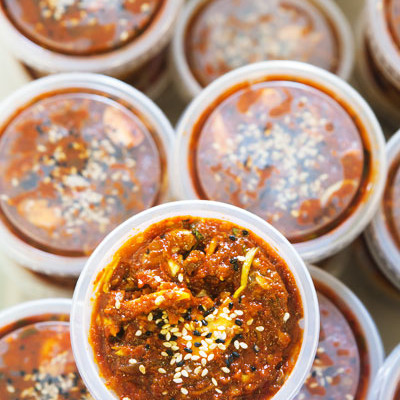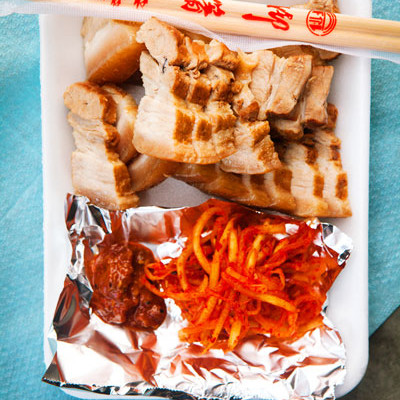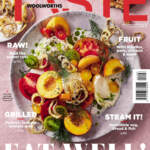Trending: Korean food (explained)
The punchy flavours of Korean food will take your tastebuds on a next-level adventure and is likely to leave you begging for seconds. But before you head off to a Korean restaurant, learn to tell your doenjang from your ssamjang. Like a pro.
Arguably the best thing about Korean food is that it almost always includes all five flavours: sweet, salty, sour, acidic and spicy. The complex flavour combo might strike fear in some of you, but the flavours of Korean food are put together in such a way that they work together like magic. The key is balance.
Without any further ado, ready your chopsticks and learn the basics of Korean eating (and read more in the October 2015 issue of TASTE Magazine).
Korean Pantry Staples
To get you started, here are 7 Korean pantry staples you need to acquaint yourself with:
[caption id="attachment_12986" align="alignright" width="250"] Jeotgal: fermented seafood (Photographed here is a redbait and seaweed dish)[/caption]
Jeotgal: fermented seafood (Photographed here is a redbait and seaweed dish)[/caption]
DOENJANG (DEN-JAHNG):
An umami-rich fermented soya bean paste that adds sour-salty flavour to soups and stews.
GOCHUJANG (KO-CHU-JAHNG):
This fermented chilli paste, often used in kimchi, packs a serious punch. You have been warned...
GUKGANJANG (GOOK-GAN-JAHNG):
A light but very salty soya sauce used in sides and soups.
SESAME OIL:
Adds nutty flavour to sides, soups and desserts. Also a dip for grilled meats and veg.
SHORT- GRAIN RICE:
Sticky “sushi” rice.
SHRIMP PASTE:
A salty paste used in kimchi and dipping sauces.
SSAMJANG:
A thick spicy paste made with doenjang, gochujang, sesame oil, onion, garlic and brown sugar.

How to order Korean barbeque - like a pro!
THE GRILL
You’ll most likely have the option to cook your own food. The grill on your table is hot and fast, so turn your meat frequently.
[caption id="" align="alignright" width="250"] Samgyeopsal: grilled pork belly seasoned with chilli, garlic and sesame seeds, served with pickles.[/caption]
Samgyeopsal: grilled pork belly seasoned with chilli, garlic and sesame seeds, served with pickles.[/caption]
THE MEAT
Galbi is marinated beef shortrib and samgyeopsal is unmarinated pork belly. Bulgogi is marinated sirloin
or other prime beef often grilled with peppers, garlic and onions.
THE SOUP
Doenjang jjigae, made with soya bean paste, is much loved in Korea. Sundubu jjigae is a delicious tofu-and- chilli stew made with a base of fish stock. Order for the table and share.
THE BANCHAN
These small side servings of crunchy and acidic ingredients cut the fattiness
of the meat. Alternate bites of meat and banchan.
THE WRAPS AND SPREADS
Standards include ssam (green leaves for wrapping meat),
ssamjang (a paste to spread on meat); and sesame oil and salt for dipping.
THE DRINK
Light Korean beer, soju and makgeolli (sweet rice wine) are good matches.
And if you want to try a hand at Korean cooking, add these recipes to your cooking repertoire:
Sweet miso pork belly with charred leeks
Korean restaurants in South Africa
If you’re not brave enough to cook Korean food in your own kitchen, here are details for a few Korean restaurants, courtesy of our friends at Eat Out:
In Cape Town:
In Johannesburg and Pretoria:


Do you stock the sake and magkeolli in store??